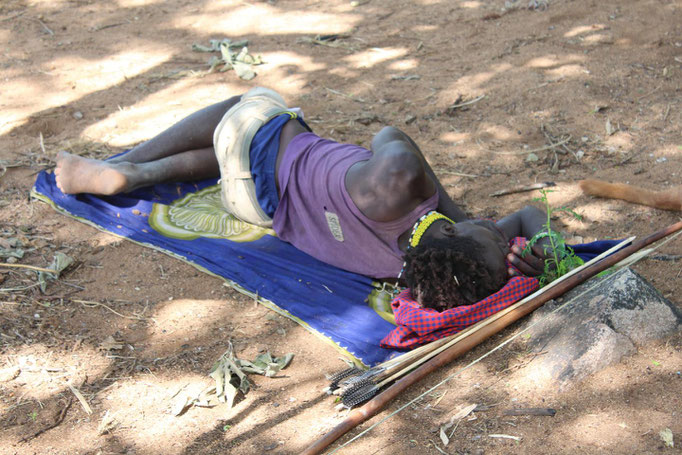
New research indicates that multigenerational communal sleeping spaces may have kept our ancestors from becoming a nighttime snack.
Sleeping, according to a team of anthropologists from Duke University, the University of Nevada, Las Vegas, and University of Dar es Salaam, is essential to life but is fraught with danger because it leaves us exposed to environmental hazards and to attacks from predators and other humans. Due to the acute vulnerabilities created by sleep, researchers have developed the “sentinel hypothesis” which, as its name implies, suggests that someone in a group needs to be awake to mitigate nighttime dangers.
To learn more about the “sentinel hypothesis” and how it plays out in the real world, Dr. David Sampson and his colleagues monitored the sleep patterns 33 Hadza men and women, aged 20 to 60, for 20 nights using an actigraphy bracelet worn by each participant. Hadza were asked to participate in the study because they are hunter gatherers who sleep outdoors in groups of 20 to 30, and according to many researchers, can act as a proxy for our hunter gatherer ancestors. .
Over the course of 220 sleeping hours, Sampson and his team found at least one person was awake or in a very light sleep 99.8% of the time thanks to naturally different sleeping patterns between younger and older adults. The “chronotype variation” (our new favorite term) meant lookout duties were naturally shared by all adults without having to force someone into wakefulness. The near permanent natural sentinel has led Sampson’s team to conclude that changing sleeping patterns, ones that so often drive today’s fed up old people to the doctor, may be the lingering effects of natural selection rather than a medical disorder.
The group’s work was published in Proceedings of the Royal Society B and can be found here. http://dx.doi.org/10.1098/rspb.2017.0967



